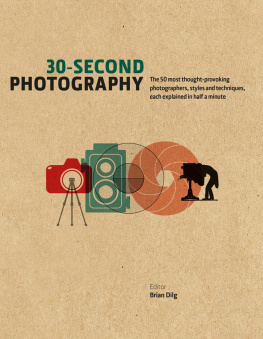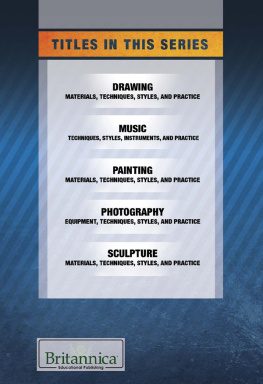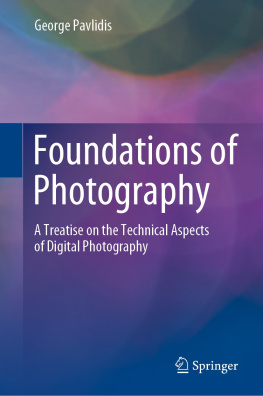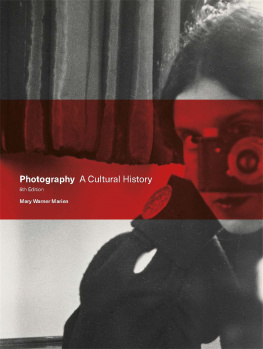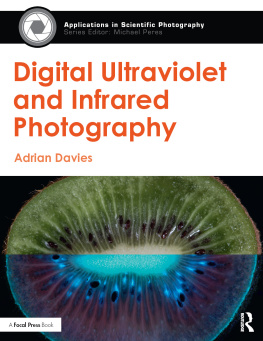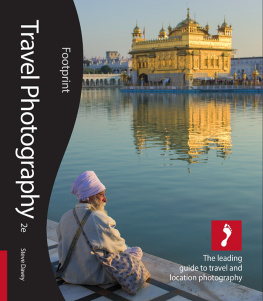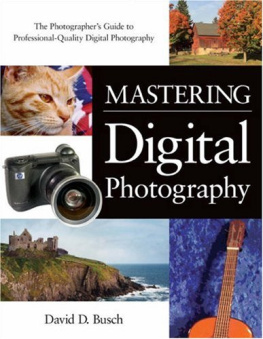30-SECOND
PHOTOGRAPHY
The 50 most thought-provoking photographers, styles & techniques, each explained in half a minute
Editor
Brian Dilg
Contributors
Adiva Koenigsberg
Jackie Neale
Marc Prst
Ben Sloat

CONTENTS
INTRODUCTION
Brian Dilg
It is estimated that we as a species will generate a trillion photographs in 2014 (compare this to the estimated 3.8 trillion images made in the entire history of photography!). Since billions of people are now at least amateur practitioners of a medium that has become as accessible as cell phones, we might presume to believe that we all more or less understand what photography is. Hasnt digital technology made photography easy? Isnt the content of a photo obvious?
Well, no and no. Philip-Lorca diCorcias comment has never been more true: Photography is a foreign language everyone thinks he speaks. What looks like a simple two-dimensional representation of reality contains not just its subject, but also its time and place, its maker, the implication of what was left outside of the frame; what happened before this moment and what might happen next; and most fascinating of all, the viewers themselves, mirrored by their very individuated interpretations, filtered through their own cultural and historical background. And cameras, despite the false assurance of a little TV screen on the back, know just as much now about how to take a good picture as they ever did, which is to say: absolutely nothing.
It is not terribly difficult to make a pretty picture, especially with todays technically sophisticated cameras. Try typing sunset into your internet search engine to see how many billions have tried. While the appetite for being wowed by pretty images seems inexhaustible, over a longer period, it proves to be a cotton candy diet: sweet, but not very filling.
If you visit any major museum in the world, you will find massive history paintings commemorating important battles, expertly executed in painstaking life-and-death detail. You will have plenty of room to stand in front of these paintings and examine them at your leisure, because the crowds are elsewhere. One place you are guaranteed to find them is in front of a simple portrait of a long-forgotten woman with her hands in her lap, a somewhat fanciful landscape behind her. Why has da Vincis portrait of Mona Lisa endured as one of the most iconic images in history? There is no high drama, no life and death; she is not the most historically significant or beautiful woman ever painted. She doesnt even have eyebrows or eyelashes. (The theory is that cleaning wore them off years ago.) Its impossible to tell what she is feeling, or whether she is even smiling or not. What is it about this ambiguity that has fascinated so many viewers? Her smile holds a clue: by making it impossible for us to definitively read her expression, da Vinci has invited countless generations of viewers to discover for themselves the most powerful tool available to any photographer: the imagination of the viewer. Photographers who can never get enough of the latest start-of-the-art, mega-resolution, hyper-sharp camera equipment might consider why leaving something to the imagination might be more satisfying to their viewers than rendering every blade of grass in excruciating, super-saturated detail (and save them a few bucks).

Not all images are what they appear to be, and precisely that openness to interpretation is what is so enticing about many successful photographs.
In 1967, curator John Szarkowski presented the work of three still-obscure photographers, Diane Arbus, Lee Friedlander, and Garry Winogrand in a show at New Yorks Museum of Modern Art. These were not the formal, immaculately composed images of Ansel Adams or Edward Weston, nor the seductive surfaces of their predecessor, Edward Steichen. They were askew, almost random, and they looked directly at the very subjects that most of us do not see because we overlook them as not worth our attention. Szarkowski described it thusly: Their aim has been not to reform life, but to know it. Photography presents us with an opportunity to slow down and get to know that which we most take for granted. It may even include our own families and neighbors. Szarkowski said the best pictures were of ordinary things, but perhaps Dorothea Lange put it best: A camera is an instrument that teaches people how to see without a camera.
The seven chapters of this book touch on a comprehensive range of aesthetic, technical, theoretical, and historical aspects of the medium. Visual Language introduces the reader to the grammar of photography, beginning with the act of containing the world within a framewhich is also to choose what to omit. Historical Movements surveys some of the major subject areas and styles, the complex intersection of content, form, and idea. Capturing the Image is a crash course in the technical tools used to turn light into a latent image. Composition covers the tools every image-maker employs to create photographic formthe how of an image, which has a profound effect on how we understand what is being shown. Light & Lighting breaks down the literal material of the photographic image, light itself, into its constituent parts and ways in which it can be shaped to create mood and visual style. Photographic Theory is as much about us as viewers as it is about how the context in which images are made and received affects our interpretation of them. Finally, Image Processing & Reproduction takes a close look at just how much of photography happens after the shutter is released.
Like your favorite grocery store filled with delights, there is no need to worry about the order in which you digest these gems. But following a thread of related ideas might lead you to discover some especially tasty pairings. Most of all, we hope that your awareness of the subtlety and richness hiding in this most democratic of mediums grows across these pages, and that youre inspired to look at the world around you with deeper appreciation, whether or not you have a camera in your hands.

A common subject, but given close-up attention and presented from an unusual angle. Varying even one elementvantage pointopens up limitless possibilities.

VISUAL LANGUAGE
VISUAL LANGUAGE
GLOSSARY
Aperture The opening of the lens through which the light enters the camera. A large opening allows for a large amount of light, and will give the resulting image a small depth of field, and conversely. Aperture is measured in f-stops. A low number indicates a large lens opening, and a high number a small opening.
Caption Text that accompanies a photograph and explains the elements of the photograph and the context in which the photograph was taken.
Depth of Field Often abbreviated as DOF, its the area of the image that is in acceptable focus. Large DOF or deep focus (achieved by a small aperture) is when most or all elements within the photograph are in focus. A picture in which only one element at one particular distance is in focus has a shallow DOF.

